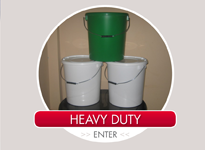

What is the maximum weight you should lift in the workplace?
November 22, 2012 at 2:23 PM
This is a difficult question to ask and the Manual Handling Operations Regulations 1992 doesn't set any specific weight limits. The reason being is this is too simplistic approach to the problem and just basing it on actual weight alone could mean you are badly advised. The best way to approach it is, instead, to assess the situation from an ergonomic viewpoint and based on a number of relevant factors. This way we can more accurately determine the chance of injury and advise on how to remedy the situation.

The Manual Handling Operations Regulations suggest these control measures, in the following order :
Try to avoid dangerous manual handling operations as much as possible. One way is to redesign the task so you don't have to physically move the load. If thats not possible, try to automate or mechanise the process.
If the dangerous, manual handling operation absolutely can't be avoided, carry out a suitable and thorough assessment of it, to ensure you're best prepared.
Work to limit the risk of injury as far as possible. Where practical, aim to provide some sort of mechanical assistance, possibly from a trolley or hoist. But where it isn't practical, see if there's a way of changing the task, the load or the working environment.
<h2>Side handle buckets can help.h2>
One consideration is finding assistance in carrying it and side handle buckets can really help in this instance, ensuring the load is shared equally between the two workers.
The medical powers that be understand and accept how big a problem workplace injuries through lifting is and they stress the importance of taking an ergonomic approach to mitigate the risks.
So what is this 'ergonomic' approach that we keep referring to? Ergonomics is often described as moulding the job around the person, rather than the other way around. This approach views manual handling operations as a whole, taking into account multiple factors - eg the type of task, how big or cumbersome the load is, the environment that the task is being carried out in and the person's capability to handle the load.
These categories can influence one another and none should be considered on its own but for the assessment to be easier to carry out, it can help to start by breaking down the operations down into these separate, simpler chunks. Key to it all is looking at what assistance you can get and what equipment, such as side handled buckets you can use to make the task far safer.
Add Pingback















